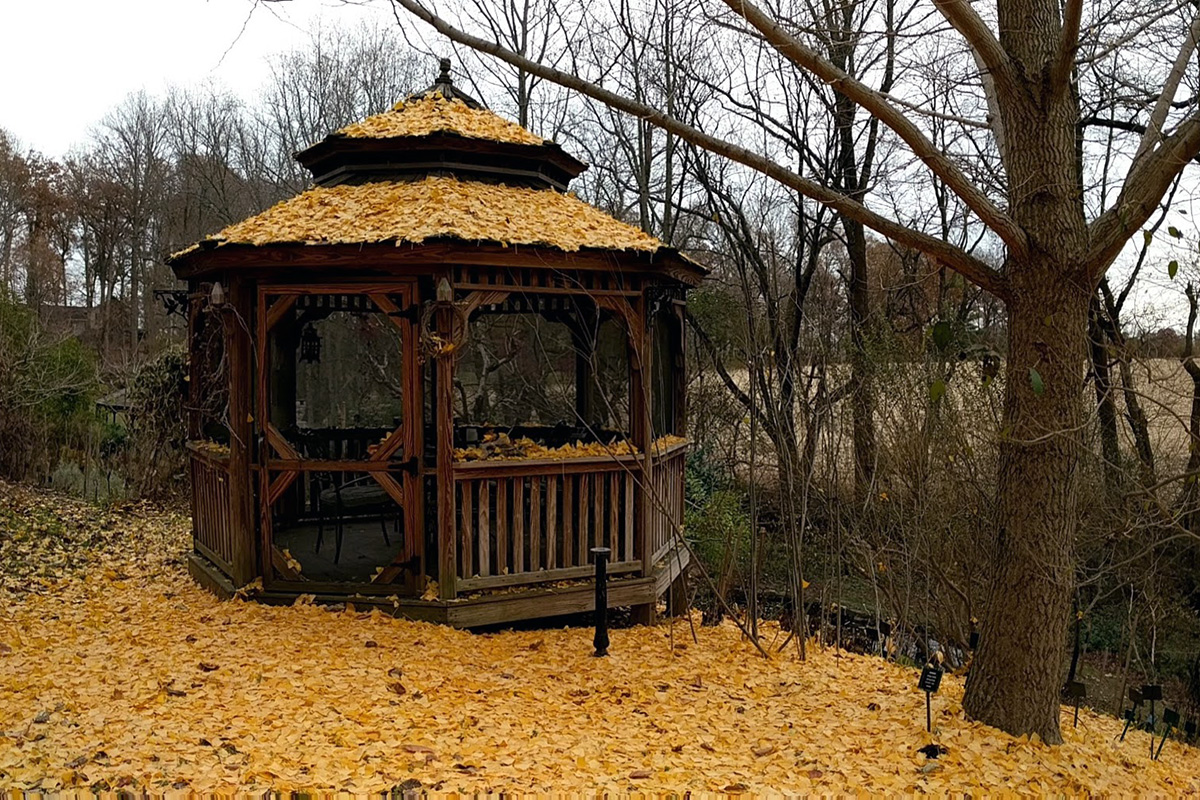When intern Astrid Stephenson and I arrived at the James A. Duke Green Farmacy Garden in Fulton, Maryland, we found director Helen Lowe Metzman wrapping an enormous rosemary plant with burlap. On that mid-November afternoon, the damp chill portended even harsher weather. She had already dug up all the tropical plants and relocated them, safe and warm, in the nearby greenhouse.
We walked on a carpet of bright yellow ginkgo leaves, adding rays of sunny color to the overcast day. We took the fieldtrip to see what might be left of the American ginseng (Panax quinquefolius) plants, as part of research for an upcoming program of the 2020 Smithsonian Folklife Festival. At this point in the season, we saw just a dried tan stalk where bright green leaves and red berries flourished earlier in the fall. Nearby, other plants with similar healing properties have braved the weather better. Helen showed (and let us taste) one called jiaogulan (Gynostemma pentaphyllum) whose still green leaves look like a tiny ground cover version of ginseng.
Ask anyone interested in traditional plant-based medicine if they have heard of Dr. James Duke, and they invariably answer in the affirmative. His most popular book, Green Pharmacy, and other prolific writings grace countless bookshelves of herbal medicine aficionados. He developed the Green Farmacy as a “teaching garden” with 300 native and non-native medicinal plants. He welcomed students and the public to the garden to learn about these plants and their healing powers. Dr. Duke passed away in December 2017, but his garden lives on in tribute, lovingly tended by Helen and others.


Having worked in the garden, first as a volunteer and then as director since 2003, Helen is determined to keep the garden as close to its original intent and structure as possible, but she also has ideas and wishes for improvement and change. And she would like to groom a new director who is a good fit for the garden. She talks of keeping Dr. Duke’s legacy alive in the garden. I recall Smithsonian horticulturalist Janet Draper recounting the saying, “a garden dies with the gardener.” She didn’t mean the whole garden dies, but those parts of it that were unique to the gardener will necessarily change and evolve under new overview.
But the Green Farmacy lives on, in a mostly dormant state heading into winter, with the hope of inevitable renewal in the spring. Helen tells us that Dr. Duke’s ashes were scattered in various places within the garden by devotees during a memorial service in June. A small alcove near the top of the garden includes some of his quotes, and a laminated photo of his smiling face framed by mullein flowers (Verbascum thapsus). Even as casual visitors, we could feel his spirit there—an energizing force.

Betty Belanus is a curator and education specialist at the Center for Folklife and Cultural Heritage and a future master gardener.


